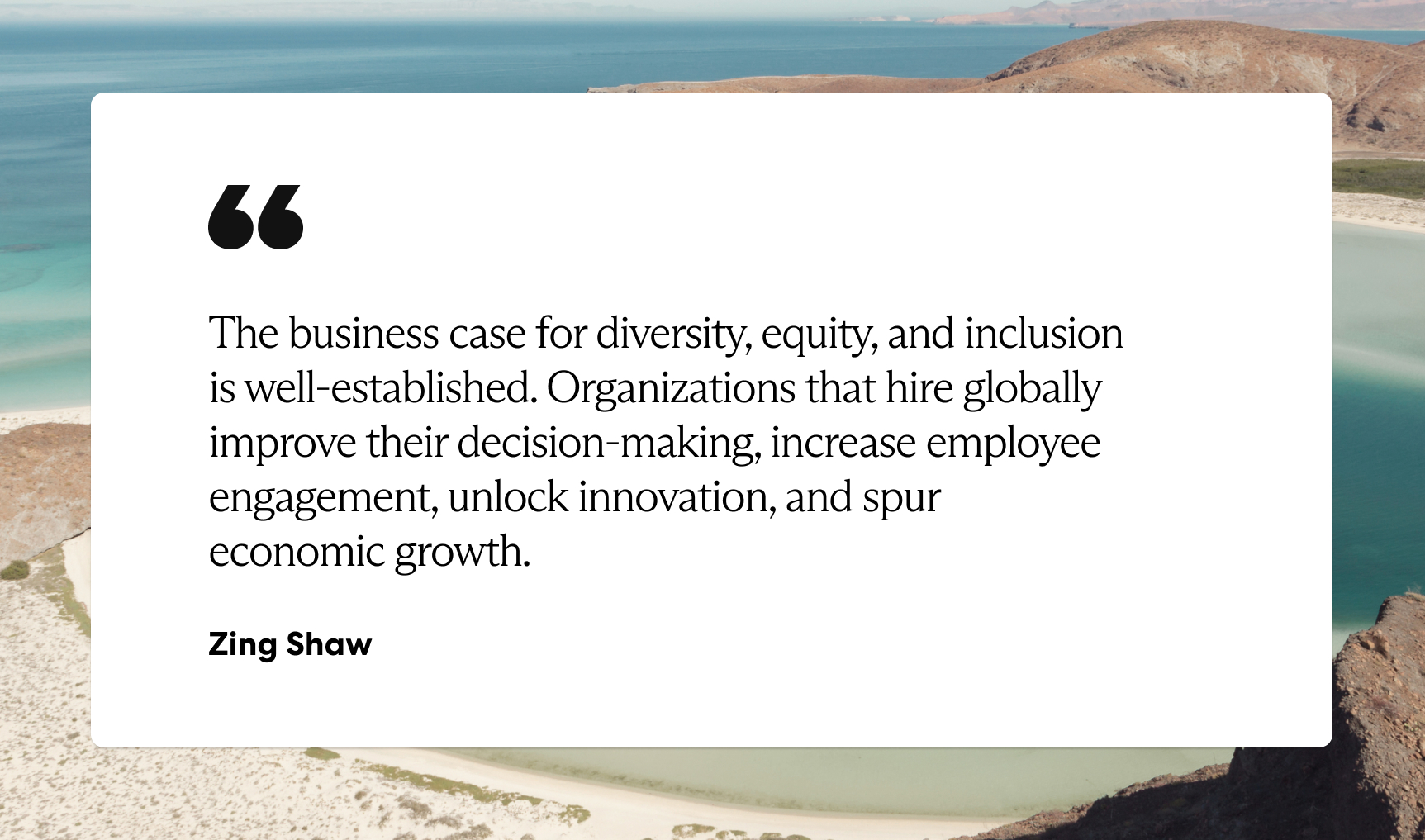Ask yourself this: What could you accomplish if you found a way to somehow attract top talent while simultaneously keeping your existing workforce engaged, productive, and—most importantly—intact?
Investing in talent is part of any savvy business plan, but when economic uncertainty causes forecasts of an economic downturn or even a recession, it can feel like a pipe dream.
That said, building your dream team is easier than you might think.
How Does a Recession Affect Business?
Economic uncertainty describes a period in which the economy's future growth is unclear, causing a myriad of potential problems.
In 2023, the International Monetary Fund observed that due to factors like Brexit, the conflict in Ukraine, and the COVID-19 pandemic, worldwide GDP fell in 2022. The United Nations predicts that worldwide economic growth will decline to 1.9% in 2023, down from 3% in 2022—stoking growing fears of a global recession.
Our current economic climate has put a strain on almost all levels of business. From supply chain interruptions to rising inflation, it’s no wonder that many business leaders are looking to contain costs and reduce spending.
But while the instincts of some may be to impose hiring freezes or cut staff, others are taking an entirely different approach.
Instead of laying off workers, they’re actually expanding their workforce and investing in tech. A recent survey of C-suite respondents found that attracting and retaining talent and modifying their business models were some of the leading high-impact issues their businesses plan to address in 2023. In another study, 76% of CEOs said they plan to grow their hiring team headcount in 2023, and 41% said their companies plan to increase their hiring, work, and tech budgets by almost 50%.
Of course, while investing in your talent and infrastructure may be forward-thinking, it doesn’t absolve HR managers and business leaders of the challenges posed by hiring in an economic climate like this one. Despite the widespread layoffs, make no mistake—it’s still talent’s market.
The Great Resignation Continues
Continuing the trend that started in 2021, employees across the world are still leaving their jobs in record numbers. Sixty-one percent of United States (U.S.) workers are thinking about leaving their jobs in 2023, according to a LinkedIn survey conducted in December 2022.
It’s not just the U.S.; a 2022 report by the Chartered Institute of Personnel and Development found that 6.5 million workers in the United Kingdom were also thinking about leaving their jobs in 2023. A 2022 PricewaterhouseCoopers survey of nearly 18,000 employees based in the Asia-Pacific region found that only 57% of respondents are satisfied with their jobs, with 1 in 5 planning to switch to a new employer in 2023.
Since November 2020, hiring rates in the U.S. have surpassed quitting rates—increasing competition for talent already in short supply. Starting in Q1 of 2023, there were over 10 million unfilled roles in the U.S., but only 5.7 million unemployed workers; in other words, there were more jobs available than there were unemployed workers to fill them.
In labor markets like this one, job seekers have plenty of options when looking for a new position—which is not ideal when competition for talent is already higher than usual.
How to Survive a Recession in Business: Build a Distributed Workforce
Unfortunately, the risk of an economic downturn doesn’t change the fact that you need to hire the right talent. Sixty-eight percent of CEOs report they plan on increasing their headcount in 2023, despite the widespread fears of a recession.
Whether you’re a small business owner or the HR manager of a large multinational company, the challenge remains the same: How do you build business resilience during a downturn, and how do you achieve success on the other side of it?
Simple—open yourself up to distributed hiring.
Why Build a Distributed Workforce?
Hiring across borders gives you the agility and resilience you need to future-proof your business. It’s the most cost-effective strategy to help you quickly find the talent you need within your budget, regardless of economic conditions. Plus, it also helps you:
Save on costs
Besides giving your talent the freedom to work anywhere, hiring remote employees can save you money. Companies that manage employees who work remotely at least two to three times per week save an average of $11,000 annually.
Building a distributed workforce also gives you more candidates to choose from so you can more easily negotiate a salary that fits your budget.
Attract top talent
Forty percent of companies cite “hiring top talent” as one of the many benefits of a distributed workforce.
Retain talent
Every year, U.S. businesses lose approximately $1 trillion to turnover. Offering remote work can lower a company’s attrition rate by up to 35%.
Navigate uncertainty with agility
CEOs across the world are seeking to mitigate economic uncertainty by “accelerating innovation and digital transformation, pursuing new opportunities in higher-growth markets, and revising business models” in 2023. Global hiring lets you quickly acquire the talent you need to stay competitive.
Boost productivity
Employees are up to 47% more productive when they work at home rather than in an office.
Diversify and innovate
Hiring across borders allows you to develop a more diverse and inclusive workforce of top talent from every corner of the globe. Choosing the best and most cost-effective candidates for the job—not just the closest—helps employers overcome skills shortages without breaking their budgets. Ethnically diverse companies are also 29% more profitable than non-diverse companies.
Inclusive global companies are:
- 1.8x more likely to be change-ready
- 1.7x more likely to be innovation leaders

Global Hiring Challenges
Budget constraints, talent shortages, and international compliance laws can make building a distributed workforce inefficient and costly for a few reasons that you need to consider.
Entity Setup
Setting up entities allows companies to hire compliantly across borders—but it’s a costly, tedious, and time-consuming process.
HR Compliance Burdens
Global employers must figure out how to comply with local labor laws, deliver international payroll, offer market-specific benefits, and more.
Workforce Support
Employers must provide global talent with timely, local support—no easy feat when teams span time zones and speak multiple languages.
How to Hire Across Borders
Crossing borders to hire the world’s top talent helps you bring in the right people at the right cost. Here’s how it’s done.
Let Your People Work Remotely
Employees around the world now want the ability to work remotely. The good news? A remote work policy doesn't only benefit talent—it helps employers, too. One study found that 53% of employee respondents said they would consider staying at their current company longer if it had a long-term remote work policy. Global telecom company Cisco has saved $500 million by reducing 50% of its real estate footprint since 2017.
Give Talent the Benefits They Want
It’s no secret that keeping employees happy and healthy empowers them to do their best work. Employees who are satisfied with their benefits are:
- 2x more likely to be satisfied with their jobs
- 70% more likely to be loyal to their employer
While healthcare benefits play a huge part in keeping talent engaged and productive, employees also increasingly value equity awards. 80% of company decision-makers expect the importance of equity compensation programs to increase in the next five years.
Partner With an HR Expert
Partnering with a global hiring expert gives your company a turnkey solution for onboarding, pay, benefits, and support. Working with a proven partner like a global employer of record (EoR) gives you peace of mind that your company is compliantly running a distributed workforce without forcing you to take on extra burdens.
What is an EoR?
An EoR is a company that offers global hiring solutions, taking on the burden of compliantly hiring, paying, and offering benefits to your talent so you can focus on running your business. If you want to know how to efficiently streamline your company’s hiring strategy in an economic downturn, reach out to an EoR.
How can a global EoR help me hire distributed teams?
A global EoR enables you to easily build teams without establishing entities in new markets. You locate the candidates you want to hire, and your EoR partner takes care of everything else, including:
- Global benefits administration
- Global equity
- Immigration
- And more
Global Teams: a World of Opportunity
Tight labor markets, rampant turnover, and budget crunches make your job harder than ever. Crossing borders to hire the world’s top talent helps you bring in the right people at the right cost, and partnering with a global EoR allows you to hire your dream team without adding to your list of daily headaches.
Quickly and Compliantly Hire Talent Across Borders With Velocity Global
Velocity Global helps you compliantly hire, pay, and manage anyone, anywhere. We simplify the employer and talent experience by combining cloud-based technology and unmatched human support in over 185 countries.
“Velocity Global takes a huge burden off my plate because I know our teams are well taken care of without having to worry about day-to-day administration. Our CEO loves that working with Velocity Global means we don’t need to handle everything ourselves, employ HR people in-country, or worry about compliance. The price you pay is well worth removing all that headache and stress.”
—Ellen Bockelman
Chief People Officer, Dragonfly Financial Technologies
To learn more about how to survive economic uncertainty through global hiring, download our guide, Rise Above Economic Uncertainty: How Global Hiring Strengthens Companies Through Uncertainty and Beyond.
The people you need are out there, even if you have to cross borders to hire them. Reach out today to learn how we can help you navigate uncertainty by hiring across borders.



